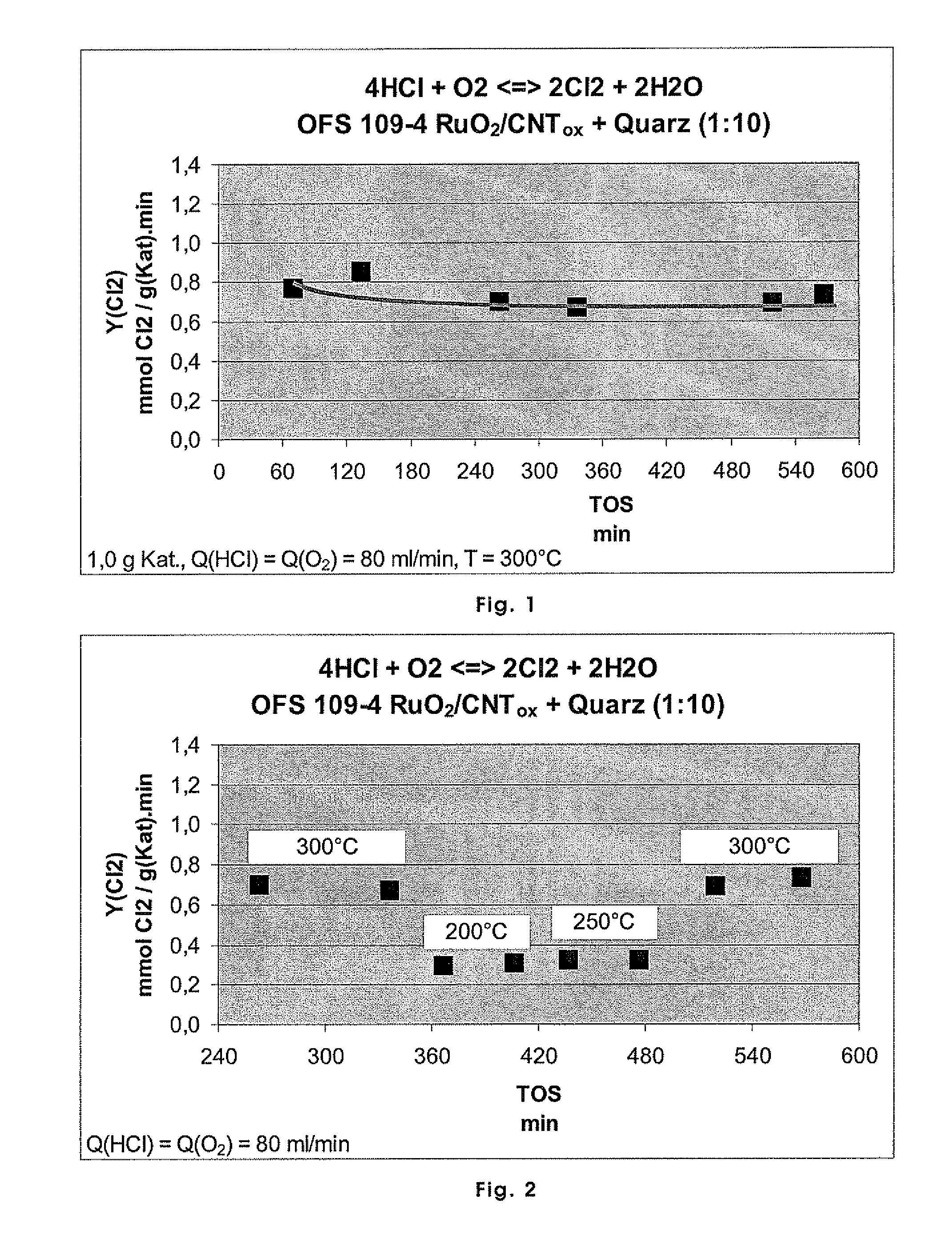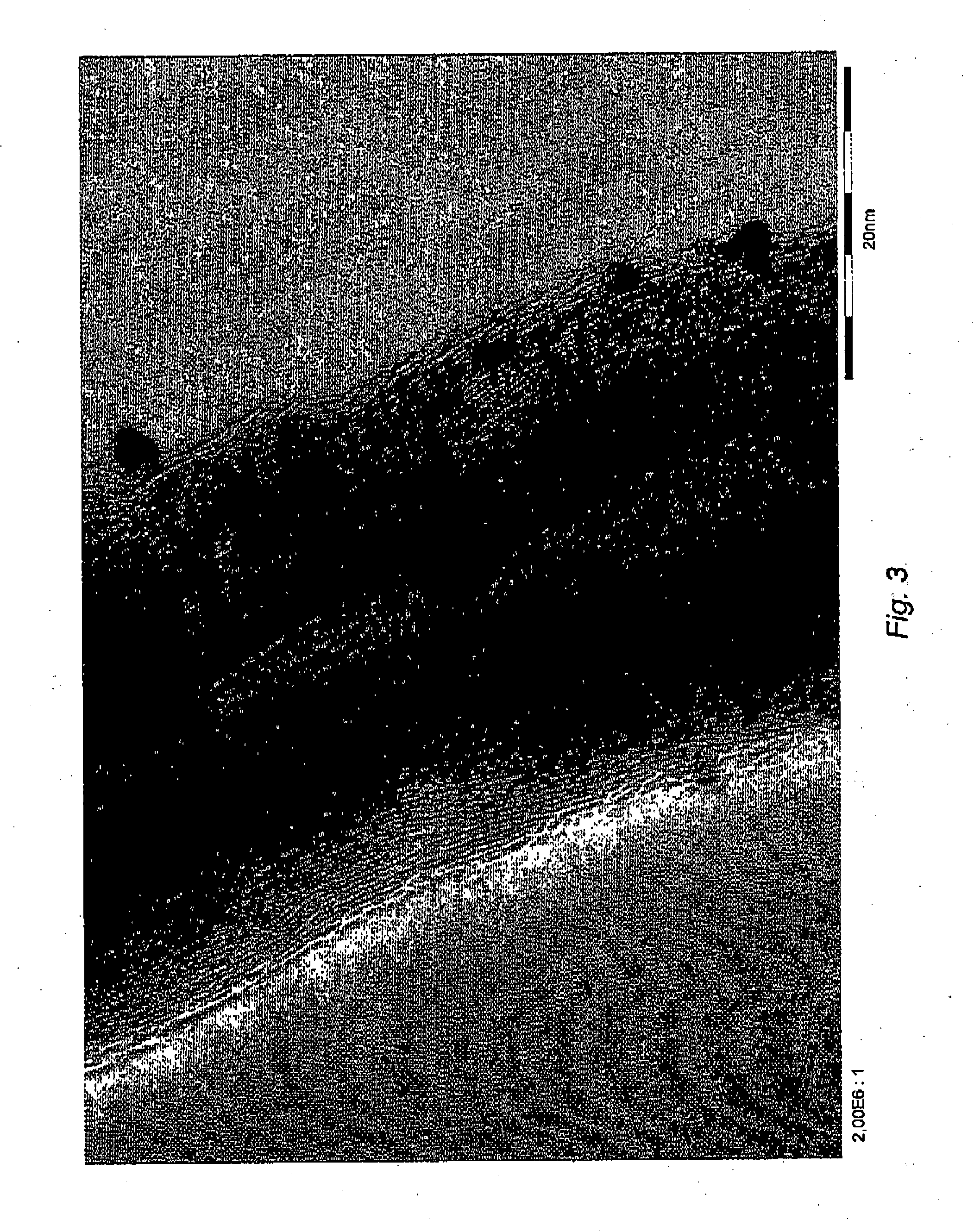Temperature-stable catalysts for gas phase oxidation, and processes for using the same
a technology of temperature stable catalysts and gas phase oxidation, which is applied in the direction of organic oxidation, chlorine/hydrogen-chloride, inorganic chemistry, etc., can solve the problems of insufficient activity/stability of known supported ruthenium oxidation catalysts, high activity of ru catalysts, etc., and achieve high activity
- Summary
- Abstract
- Description
- Claims
- Application Information
AI Technical Summary
Benefits of technology
Problems solved by technology
Method used
Image
Examples
example 1
Modification of Carbon Nanotubes
[0048] In a multinecked flask with heating plate and reflux condenser, 20.0 g of multi-wall carbon nanotubes (Baytubes® carbon nanotubes from Bayer Material Science AG (Leverkusen, Germany)) were boiled for 5 h in concentrated nitric acid, with stirring. The carbon nanotubes modified in this way were then dried under vacuum at 40° C. for 8 h. The product was examined by photoelectron spectroscopy (XPS), transmission electron spectroscopy and acid-base titration. The modified CNT contain approx. 1 mmol of acid groups per gram.
example 2
Catayltically Active Component Supported on Carbon Nanotubes
[0049] (Preparation of a Catalyst According to the Invention)
[0050] In a round-bottomed flask with dropping funnel and reflux condenser, 18 g of CNT from Example 1 were suspended in a solution of 2.35 g of commercially available ruthenium chloride n-hydrate in 50 ml of water and the suspension was stirred for 30 min. 24 g of 10% sodium hydroxide solution were then added dropwise over 30 min and the mixture was stirred for 30 min. A further 12 g of 10% sodium hydroxide solution were then added dropwise over 15 min and the reaction mixture was heated to 65° C. and maintained at this temperature for 1 h. After cooling, the suspension was filtered and the solid was washed 5 times with 50 ml of water. The moist solid was dried at 120° C. in a vacuum drying cabinet for 4 h and then calcined at 300° C. in a stream of air to give a ruthenium oxide catalyst supported on CNT. The calculated amount of ruthenium was Ru / (RuO2+CNT)=10%...
example 3
Catalytically Active Component Supported on Titanium Dioxide
[0053] (Comparative Catalyst not According to the Invention)
[0054] A ruthenium-on-titanium dioxide catalyst (4.7 or 10% Ru w / w) was prepared according to the process in Example 2 and calcined at 300° C. in a stream of air (3a or 3b).
[0055] Catalytic Tests
PUM
| Property | Measurement | Unit |
|---|---|---|
| temperature | aaaaa | aaaaa |
| temperature | aaaaa | aaaaa |
| temperatures | aaaaa | aaaaa |
Abstract
Description
Claims
Application Information
 Login to View More
Login to View More - R&D
- Intellectual Property
- Life Sciences
- Materials
- Tech Scout
- Unparalleled Data Quality
- Higher Quality Content
- 60% Fewer Hallucinations
Browse by: Latest US Patents, China's latest patents, Technical Efficacy Thesaurus, Application Domain, Technology Topic, Popular Technical Reports.
© 2025 PatSnap. All rights reserved.Legal|Privacy policy|Modern Slavery Act Transparency Statement|Sitemap|About US| Contact US: help@patsnap.com


